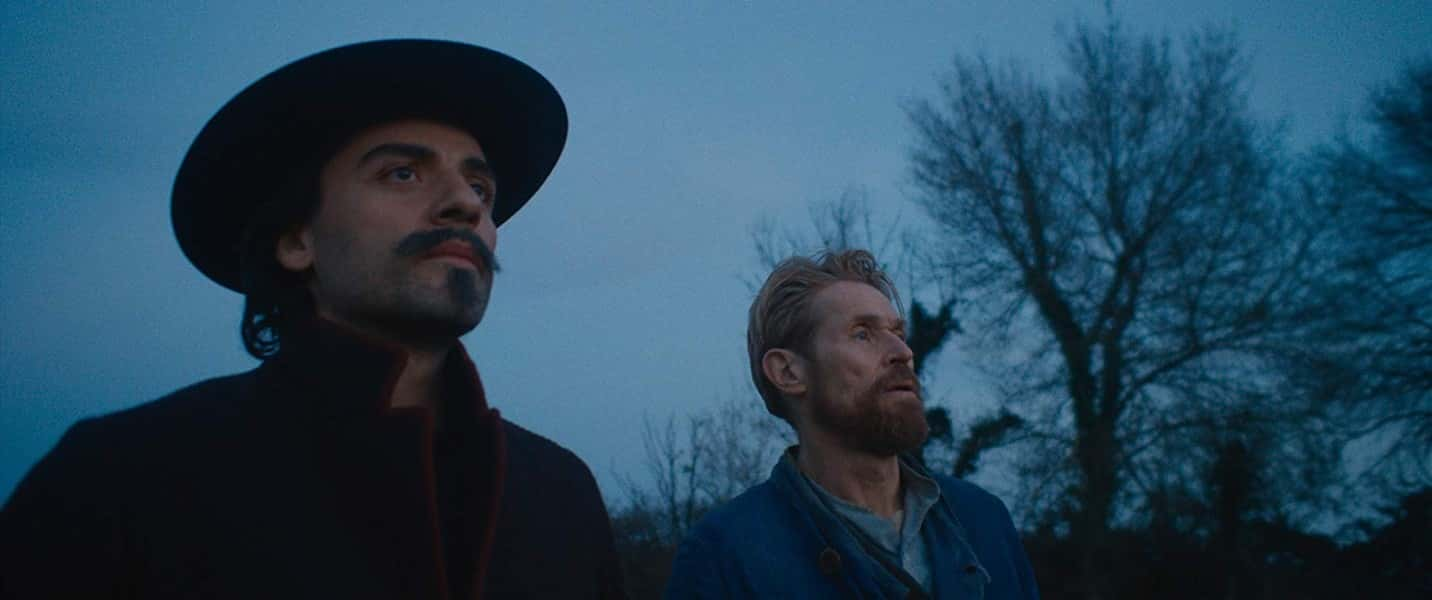Author: Joel Dull
Photo courtesy of CBS Films
Every once in a while, I see a film that stirs up a yearning to do something; something creative or spontaneous. Usually, it is something extraordinary like travel the world or drop out of school and go find my “Walden”, so I can live out my life surrounded by all of the little things that are important to me. At Eternity’s Gate created a particularly unique desire. It did not make me want to change my life style or do anything extraordinary in that matter. Rather, it makes me want to see the world as Vincent van Gogh did. The film depicts van Gogh’s life without the rose-colored glasses we so often view artists with. Instead, we see the sky through the blue lens of The Starry Night and the sun through the golden lens of Sunflowers. I mean this literally, as scenes of the film are color graded with blues and yellows to reflect different states of mind at various points in van Gogh’s life. So often society idealizes painters without taking into account how tortured these artists were. We look at their paintings and think of how beautiful they are, but the painter never hears these words. At Eternity’s Gate does an excellent job of commenting on how Vincent van Gogh did not receive much appreciation for his work. More to that point, van Gogh had a hard life and the film does not shy away from that. It addresses his struggles with mental illness and the awful things he did and usually did not remember. It would be an injustice to exclude the more gruesome parts of van Gogh’s life and simply take his paintings as beautiful pieces of art because his art was his escape. Art allowed him to see the beauty in the world through his own mind and eternalize it.

There are several scenes where other people ask van Gogh why he is painting what he is painting. One scene in particular shows Gabby (Stella Schnabel) asking about the flowers van Gogh is painting. Gabby comments that the flowers themselves are more beautiful than the way van Gogh paints them. Van Gogh doesn’t disagree, but he states that what is important to him is that his flowers, the flowers in the paining, will “resist.” He points out that all flowers will one day die and fade away, but the painting will continue to survive. As Gabby continues to study the flowers she then asks if he will paint her so that she may stay young forever. The way van Gogh feels his art immortalizes his subject is a way he copes with the disapproval of his art by so many. At one point in the film van Gogh explains that he sometimes wonders if God gave him a gift at the wrong time. He believes that his paintings simply weren’t meant for the people in his lifetime.

In a later scene, van Gogh and Paul Gauguin (Oscar Isaac) begin a debate on painting from the mind versus painting what is in front of them. Gauguin argues that paintings should be pulled from what is in the mind and not what is seen with the eyes because to do that is to copy. Gauguin points out that no person looks at nature and sees the same mountain. Each person sees something different, and therefore it is pointless for those things to be painted, but that is precisely why van Gogh believes his paintings are his own. Every time he sees a subject he sees something completely unique and beautiful. That is what makes each subject he paints his own. Each landscape, each plant is unique to van Gogh. Finally, Gauguin concedes and assures van Gogh that the faces of the people he paints are also van Gogh’s, then. In the scene, Gauguin says, “People will go to museums to see paintings of people. Not people who were painted.” Van Gogh has the power to make anything entirely his own and give it eternal life. He stands “at eternity’s gate” and chooses who or what enters. The movie highlights what is so wonderful about painting; it has the ability to do something no other art form can. Painting captures a single scene, a single moment from only the eyes of the painter. Sure, movies are framed and stories are told in a way that the artist imagined, but painting: painting shows us the artist’s mind. Nothing else.
![Van Gogh, V. (1890). At Eternity’s Gate (‘Sorrowing Old Man’) [Oil on Canvas]. Retrieved from: vincentvangogh.org](https://dehayf5mhw1h7.cloudfront.net/wp-content/uploads/sites/924/2019/02/18152739/vangoh2.jpg)
I want to see the world like Vincent because he was able to recognize the beauty that resided in everything. Yes, it’s corny, but there’s something so simple and pure about it that it churns up the yearning to do something in a way not many other movies have.
In memory of my cousin Hope,
You knew what it meant to see the beauty in everything.
Love, Joel
JOEL DULL | I’m now considering a minor in art history | KXSU Arts Reporter
Reference:
van Gogh, Vincent. “To Theo Van Gogh. The Hague, Sunday, 26 and Monday, 27 November 1882.” Received by Theo van Gogh, Saint-Remy De Provence, France, 26 Nov. 1882.
